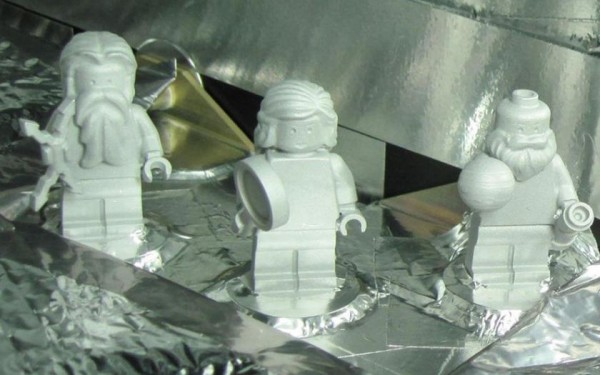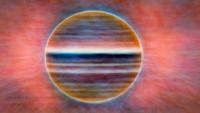Juno Spacecraft on way to Jupiter has a ‘Crew ’of Three LEGO Figurines
| Arthur Dominic Villasanta | | Jun 14, 2016 08:37 AM EDT |
(Photo : NASA/LEGO) Jupiter, Juno and Galileo LEGO figurines aboard Juno spacecraft
It turns out NASA's solar powered Juno spacecraft that will rendezvous with Jupiter on July 4 after a five-year odyssey has three teeny-weensy Lego astronauts stowed onboard.
The aluminum "Legonauts" as they're called by NASA and LEGO represent the Roman god Jupiter and his wife, Juno. The other Legonaut is the Italian astronomer Galileo Galilei.
Like Us on Facebook
Jupiter is shown holding his Thunderbolts. Juno is grasping a magnifying glass in her right hand to represent the search for truth. Galileo holds a telescope in his left hand and a model of the planet Jupiter in his right.
Unknown to most of the world, these three Legonauts were secretly sealed in a thermal protection case and stowed aboard the Juno spacecraft. The Legonauts were made as part of NASA and LEGOs "Bricks in Space" project.
NASA and LEGO specifically placed the trio aboard Juno to inspire children to explore science, technology, engineering and mathematics.
Apart from the Legonauts, Juno carries a plaque dedicated to Galileo. The plaque was provided by the Italian Space Agency and measures 7.1 x 5.1 centimeters. It weighs six grams.
The plaque depicts a portrait of Galileo and a text in Galileo's own hand written in January 1610 while he was observing what would later be known to be the Galilean moons. The text translates into English as:
"On the 11th it was in this formation, and the star closest to Jupiter was half the size than the other and very close to the other so that during the previous nights all of the three observed stars looked of the same dimension and among them equally afar; so that it is evident that around Jupiter there are three moving stars invisible till this time to everyone."
NASA's Juno mission was launched in 2011 to investigate the origin and composition of Jupiter. Its mission is to investigate Jupiter far closer than ever before. Juno stands for "JUpiter Near-polar Orbiter.
Juno will be placed in a polar orbit to study Jupiter's composition, gravity field, magnetic field, and polar magnetosphere. It will also search for clues about how Jupiter formed, including whether it has a rocky core; the amount of water present within the deep atmosphere and its deep winds
Juno will fly along the tops of Jupiter's clouds and probe beneath them. Juno will orbit Jupiter 32 times during its mission.
TagsJuno spacecraft, NASA, Lego, Legonauts, Bricks in Space
©2015 Chinatopix All rights reserved. Do not reproduce without permission
EDITOR'S PICKS
-

Did the Trump administration just announce plans for a trade war with ‘hostile’ China and Russia?
-

US Senate passes Taiwan travel bill slammed by China
-

As Yan Sihong’s family grieves, here are other Chinese students who went missing abroad. Some have never been found
-

Beijing blasts Western critics who ‘smear China’ with the term sharp power
-

China Envoy Seeks to Defuse Tensions With U.S. as a Trade War Brews
-

Singapore's Deputy PM Provides Bitcoin Vote of Confidence Amid China's Blanket Bans
-

China warns investors over risks in overseas virtual currency trading
-

Chinese government most trustworthy: survey
-

Kashima Antlers On Course For Back-To-Back Titles
MOST POPULAR
LATEST NEWS
Zhou Yongkang: China's Former Security Chief Sentenced to Life in Prison

China's former Chief of the Ministry of Public Security, Zhou Yongkang, has been given a life sentence after he was found guilty of abusing his office, bribery and deliberately ... Full Article
TRENDING STORY

China Pork Prices Expected to Stabilize As The Supplies Recover

Elephone P9000 Smartphone is now on Sale on Amazon India

There's a Big Chance Cliffhangers Won't Still Be Resolved When Grey's Anatomy Season 13 Returns

Supreme Court Ruled on Samsung vs Apple Dispute for Patent Infringement

Microsoft Surface Pro 5 Rumors and Release Date: What is the Latest?











